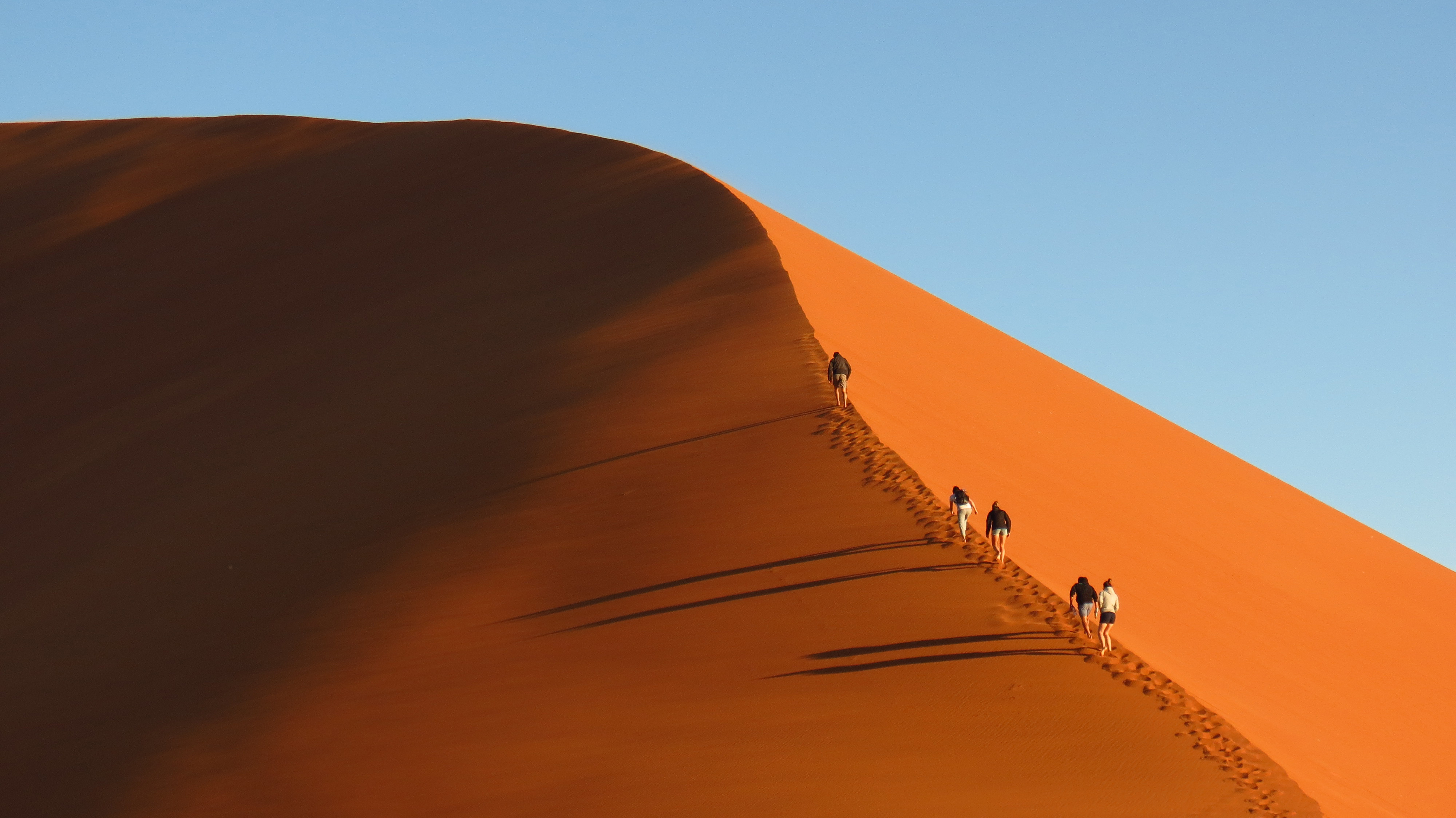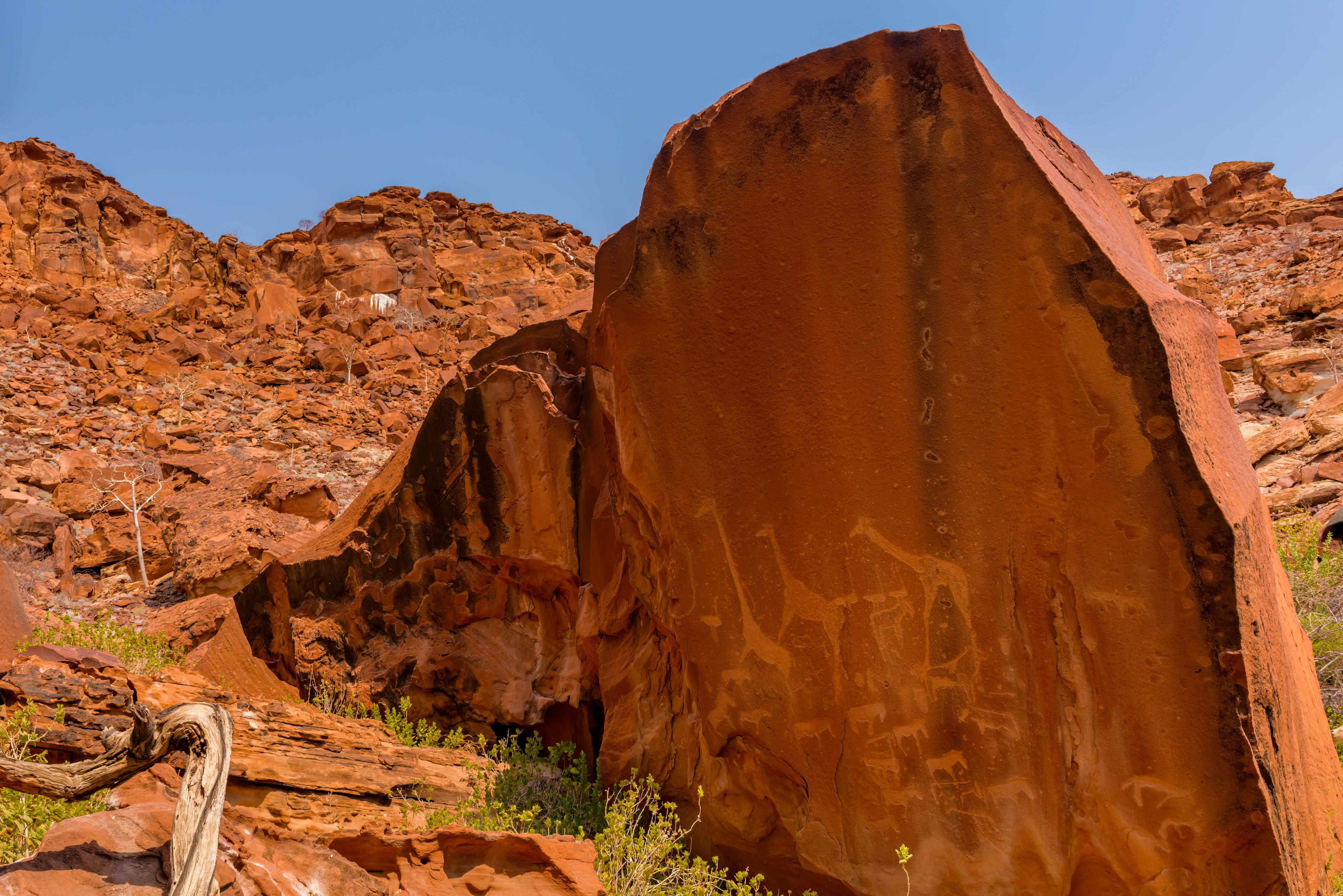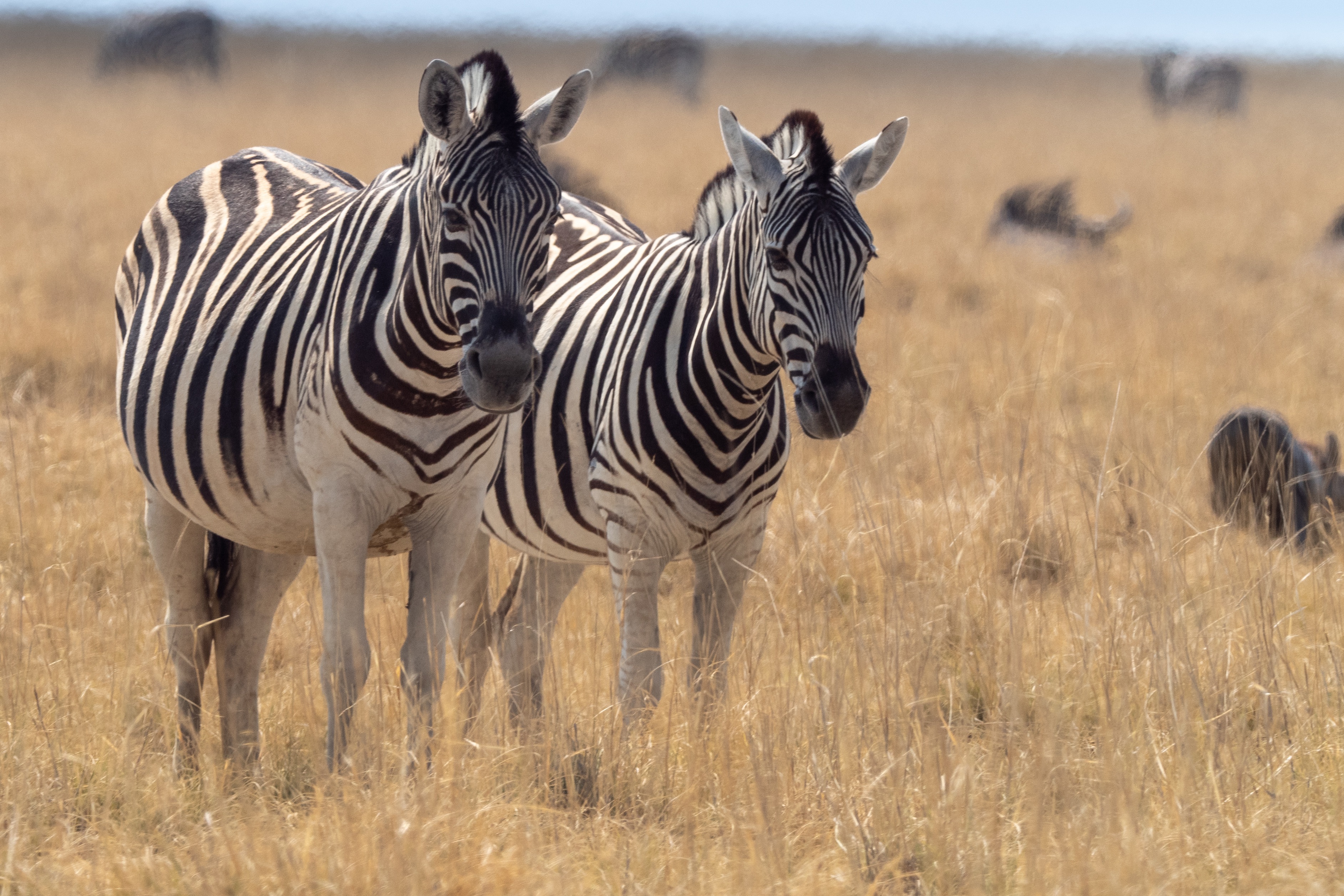Experience the Alien Beauty of Namibia
President's Pick: Namibia
May 22-Jun 7, 2025 | Journey Leader: Deborah Hart
Sep 18-Oct 4, 2025 | Journey Leader: Alan and Jenny Ingram
Be part of our exclusive small-group adventure, where you'll explore ancient, dramatic landscapes and witness an amazing diversity of wildlife in this true bucket-list destination. I strongly recommend this unique safari adventure, here's what you can look forward to...
Discover Namibia’s otherworldly wonders: the golden hues of the world's oldest desert, some of the highest dunes on Earth, Africa's largest collection of prehistoric rock art, and wildlife thriving around Etosha’s waterholes. Dive into these highlights as we explore some of the remarkable experiences awaiting you on this journey.
The Namib | The enigmatic Namib Desert is a vast and ancient expanse stretching over 2,000 kilometres. Its name translates to "an area where there is nothing." Yet, within its arid embrace lies a world of wonder. Dating back 80 million years, the Namib is the oldest desert on Earth. Annual rainfall is a mere 2 millimetres in its driest parts, solidifying its status as the only true desert in southern Africa.

Home to specially adapted species, the Namib hosts desert elephants, ostriches, oryx, and the endemic Namib Desert beetle, all thriving in this seemingly inhospitable environment. Human presence is sparse, with only small Indigenous communities like the Ovahimba, Obatjimba Herero, and Topnaar Nama living in harmony with the land.
Sossusvlei | In the heart of the Namib Desert lies Sossusvlei, a striking landscape of towering sand dunes that rank among the highest in the world. As the sun rises and sets, the colours of the dunes shift, painting an ever-changing scene.
Sossusvlei is a unique salt and clay pan encircled by these colossal dunes. The vivid orange sands owe their colour to high concentrations of iron, which have oxidized over countless years. The older the dune, the more intense its reddish hue. Many dunes exceed 200 metres in height, with the iconic "Big Daddy" towering at around 325 metres, and Dune 7 reaching an astonishing 388 metres.
This area is not just a visual marvel but also a hub of ecological diversity. The highest and more stable dunes support surprisingly rich vegetation, nourished by underground rivers that occasionally flood the pans, creating temporary marshes. The white, salt-rich pans contrast starkly with the surrounding sands, adding to the surreal beauty of the landscape.
Sossusvlei's fauna is equally fascinating, with small creatures like arthropods, reptiles, and mammals such as jackals and rodents. Larger animals, like oryxes with unique blood-cooling systems, also roam the area. The allure of Sossusvlei lies in its majestic landscape, where the resilience of nature is on full display.

Twyfelfontein | Namibia boasts one of Africa's largest rock art concentrations, created by the ancient San people. Twyfelfontein, a UNESCO World Heritage site in northwestern Namibia's Kunene Region, features over 5,000 depictions, making it one of Africa's most significant petroglyph collections.
The engravings, created by chiselling through the dark desert varnish to expose the lighter sandstone beneath, include iconic images of animals such as rhinoceroses, elephants, ostriches, and giraffes, as well as human and animal footprints. Among these, the "Lion Man" - a lion with an elongated tail ending in a six-toed paw - depicts a fascinating human-animal transformation likely tied to shamanistic rituals.
The rock art at Twyfelfontein forms a comprehensive and high-quality record of the ritual practices of hunter-gatherer communities over at least 2,000 years. The engravings can be categorized into three types: iconic imagery of animals and humans, geometric pictograms, and indentations used for everyday activities like grinding and games. Twyfelfontein offers a mesmerizing journey through time, connecting you with the ancient traditions of Namibia’s early inhabitants.
Etosha National Park | No trip to Namibia would be complete without experiencing a safari, and Etosha National Park stands as one of Africa's premier wildlife destinations. Covering nearly 22,912 square kilometres, its diverse ecosystems, from savannah to woodland, support over 100 mammal species and 340 bird species.

Etosha, meaning “big, white place” in Oshiwambo, is named after the vast salt pan that dominates the park's landscape. Formed around two million years ago when the Kunene Delta dried up, this 5,000 square kilometre salt pan provides a stark and mesmerizing backdrop for wildlife viewing.
Etosha’s network of natural and artificial waterholes ensures a steady water supply. These waterholes are prime game-viewing spots, offering chances to see elephants, lions, giraffes, rhinos, cheetahs, and more. Namibia’s conservation efforts make it a top destination for wildlife enthusiasts and conservationists.
Experience these sights and more on our 17-day small group journey, limited to just 24 travellers, with two departures to choose from in 2025:
May 22 and September 18
Book early to save $300 per person!
With Craig Travel, enjoy a carefree adventure with included airfare and transfers, 35 meals, first-class hotels and lodges, thrilling safaris, guided sightseeing, and gratuities.
For full details, visit our website or reach out to our Sales Specialists at 1-800-387-8890 to book today!





